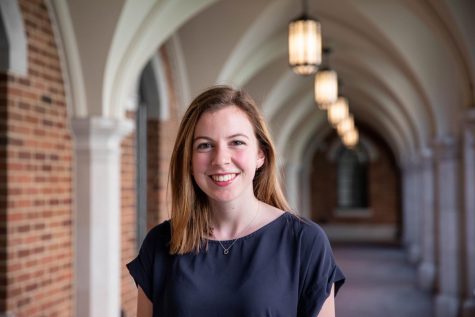Elementary school students who come from families in the top 20 percent of socioeconomic status (SES) are more than six times as likely to receive gifted services in school than students from families in the bottom 20 percent of SES, according to a recent study published Sept. 2019 in the Harvard Educational Review by Vanderbilt professor of Public Policy Jason Grissom.
The study was co-authored by Peabody College Ph.D. student Joshua F. Bleiberg and Assistant Professor of Educational Leadership at the University of Florida Christopher Redding.
According to the study, this disparity remains substantial even when certain variables are normalized. When comparing students who received the same test scores and schooling, students from the top 20 percent of SES were still twice as likely as bottom 20 percent SES students to receive gifted services.
Gifted services are either in- or out-of-classroom activities certain students receive because they have been deemed to have exceptional aptitudes or talents, Grissom said. This could take the form of extra activities in their normal classroom or meeting once or more a week outside of their normal classroom for enrichment.
Grissom and his colleagues analyzed nationally representative longitudinal data on gifted programs in schools to draw their conclusions. Their study fills gaps in previous research which found that students from marginalized groups are less likely to receive gifted programming in school by analyzing SES, a previously under-studied variable.
Part of the reason this gap arises could be from fundamental differences in the upbringing of children from different SES groups, according to Grissom. For example, families who are wealthier will live in different neighborhoods and might be more likely to or able to send their child to a school with a strong gifted program. These differences are accounted for in the study by comparing who receives gifted services among students with the same school background.
Grissom also notes that previous studies have indicated that wealthier families are more likely to hire private psychologists to evaluate their children for giftedness outside of the school system’s identification process. In most evaluation systems, students who score above a cutoff or meet other criteria following an assessment qualify for gifted services.
“When a low SES family has their kid evaluated, and they miss the cutoff, then that’s the end of the road,” Grissom said. “If a high SES family’s kid goes in and misses the cutoff, they can just say ‘well, I’ll pay a psychologist to test them.’”
There are many possible reasons these disparities arise even when test scores and schools are standardized, according to Grissom. He suggests that part of the problem could be in the way students are identified as gifted. Typically, classroom teachers are responsible for identifying students they believe should receive giftedness screening.
“It could be that teachers are more inclined to see giftedness in kids that are from more well-off families,” Grissom said. “If my kid has more access to books and therefore has a better vocabulary, even though they actually have the same aptitude as a low SES kid, the teacher might see the better vocabulary and say ‘oh, I think that kid might be gifted.’”
Another proposed reason for this gap is that high SES parents are more likely to network with other parents, understand the giftedness screening process and know how to start the process for their own children, Grissom said.
Several solutions to this gap have been proposed. School districts could have every student take the giftedness evaluation test, a process known as universal screening. According to Grissom, universal screening has been generally successful in raising the chances of low-income students being identified as gifted; however, the process is expensive.
Other proposed solutions include training teachers to identify low-income students as gifted, as well as eliminating bias towards high SES students in the language and type of questions asked on the giftedness tests themselves. Another proposed solution is setting different cutoff scores in different schools to account for disparities in student opportunity.
Grissom emphasizes the importance of closing this gap, since gifted services are important to the academic success of gifted elementary schoolers.
“The magnitude is really, I think, disturbing,” Grissom said. “If schools are going to provide kids with gifted services, that’s suggesting schools think those services are important to provide. If they’re important to provide to high SES kids, then they’re also important to provide to low SES kids.”







